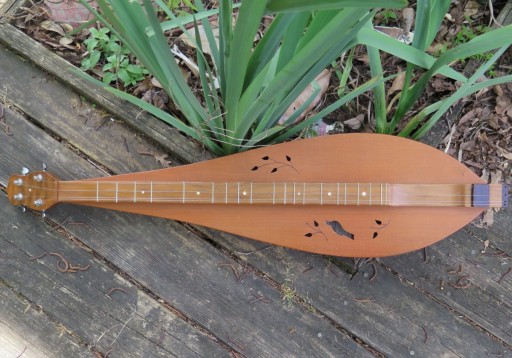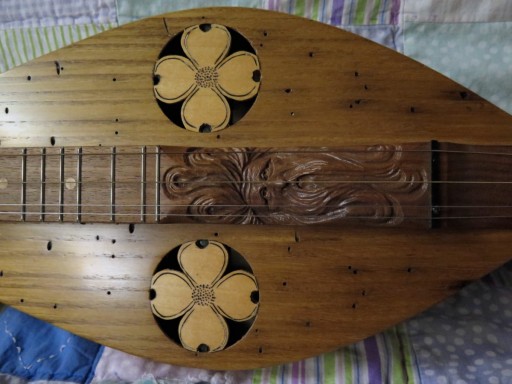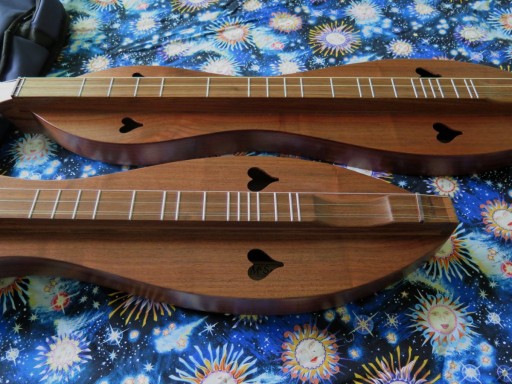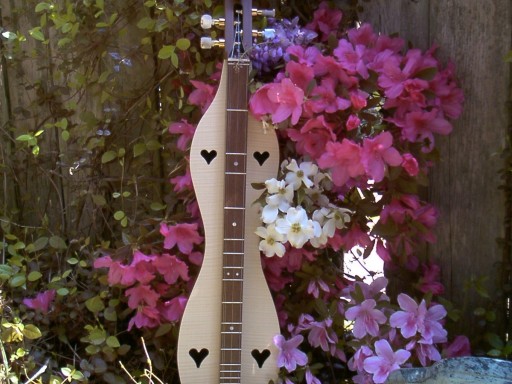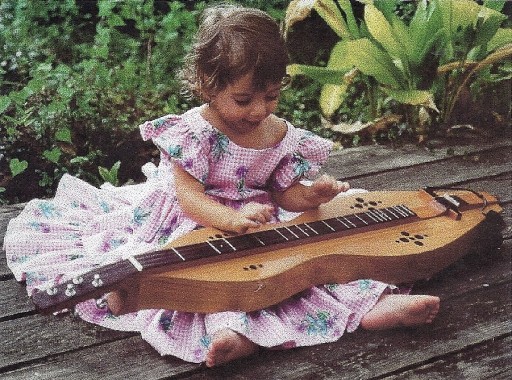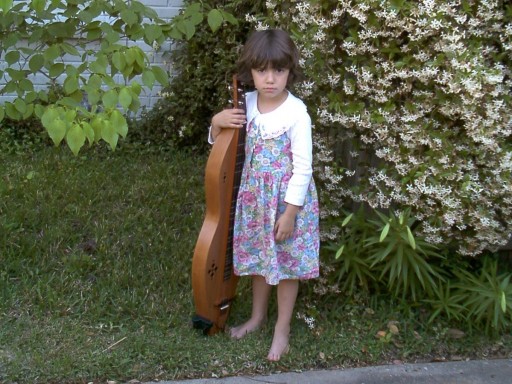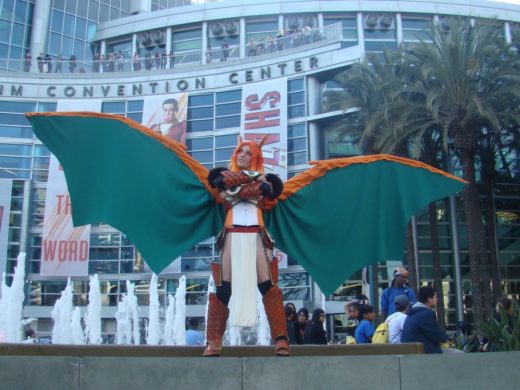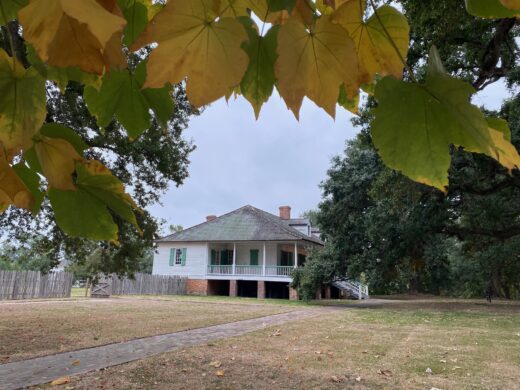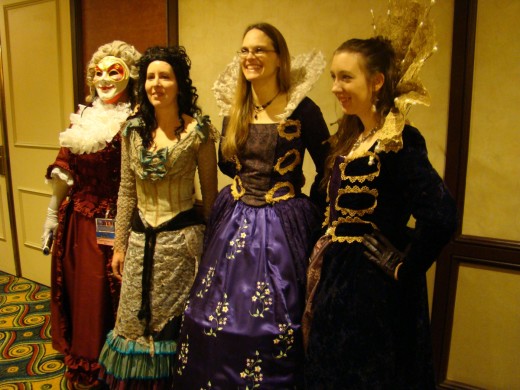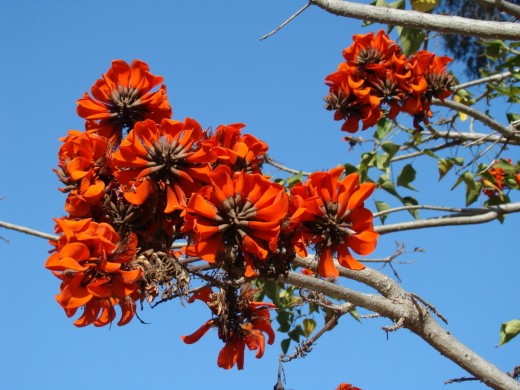Mountain Dulcimer Collection
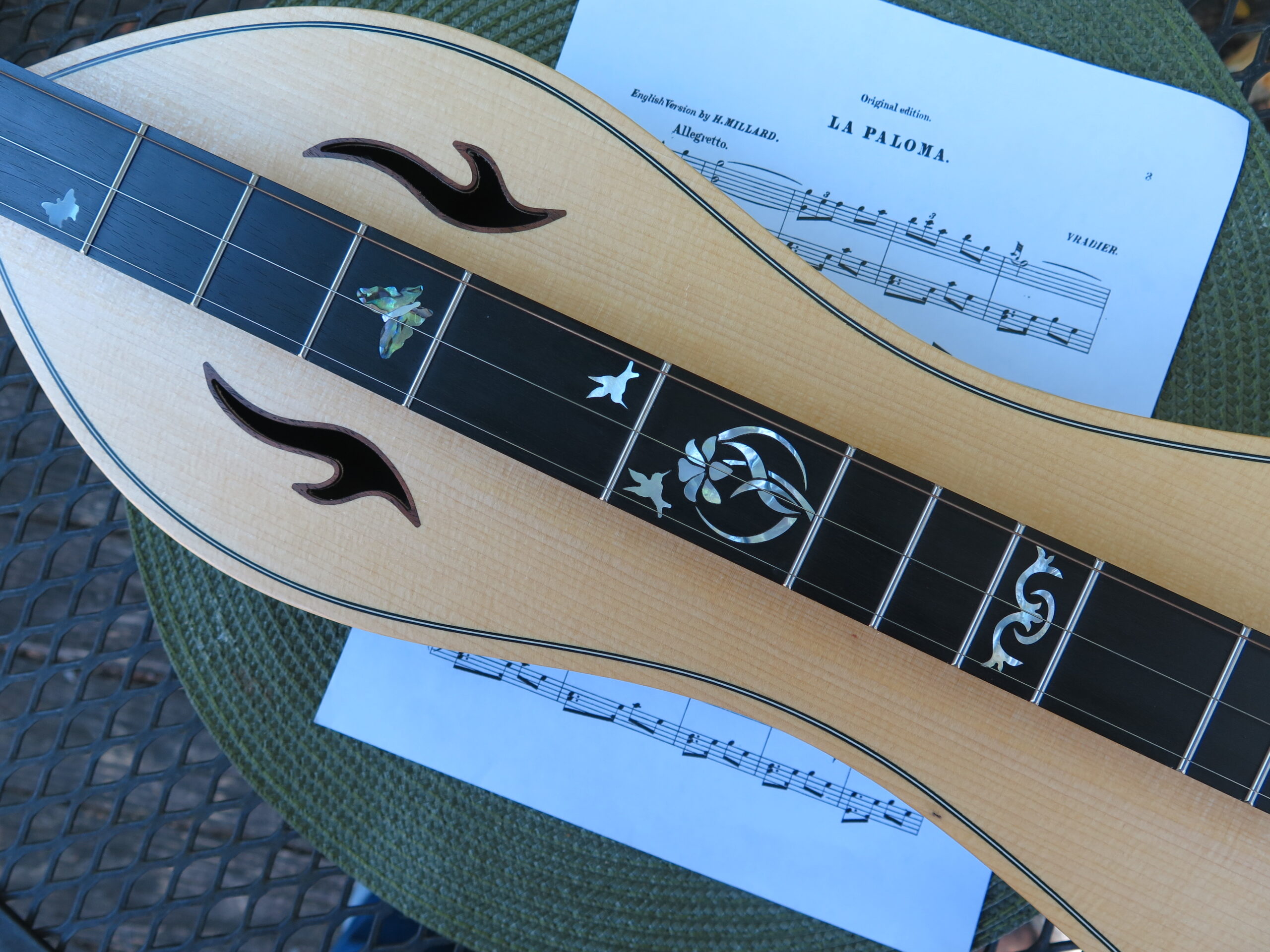
When I began playing the mountain dulcimer, I was always surprised when I met other players who would recount their collection of five or more dulcimers. What! I attested that I would never own more than one dulcimer. But like serious guitar or banjo players, I soon learned that most folks have several musical instruments. Mountain dulcimers are handmade by individual craftsmen and luthiers. Dulcimers are built from different woods with various shapes and lengths. Each one has a unique sound or “voice.” It became apparent that there were plenty of reasons to own multiple dulcimers. So over the years I have assembled a collection of dulcimers. Since I tend to hold things dear to my heart, it is hard to part with any of them. Some of the dulcimers are ones that have been given to me, some are ones I purchased for specific reasons. In any event, playing a musical instrument is a rewarding hobby or vocation. The mountain dulcimer is easy to learn to play. Playing the dulcimer calms the soul and is a wonderful way to share music with other people.
Dulcimers originated in the Appalachian Mountains of southwestern Virginia, Tennessee and Kentucky. Some folks say that the dulcimer is the only truly American musical instrument. Antecedents to the dulcimer mostly likely came to this country with early settlers from Europe who brought primitive zithers and stringed instruments with them. In fact, our father acquired several large, elongated rectangular three-stringed and fretted instruments at an auction in the Shenandoah Valley in the 1980’s. The builder was an elderly violin maker. He had built these instruments modeling them after a German scheitholt which he found in an old barn dating from the 1700’s — according to the builder’s recollections. Unfortunately, I don’t have a photo of this instrument — but it distinctly gives a clue as to the origins of the dulcimer..
There seems that “pockets” of dulcimer builders flourished in the late 1800’s and early 1900’s. An hourglass-shaped dulcimer emerged from dulcimer builders in Kentucky. In southwestern Virginia, a totally unrelated style of dulcimer was being built. Here are two of these dulcimers. The dulcimer on the right was purchased by my father at an auction in Verona, Virginia, in the Shenandoah Valley. The one on the left is a handmade one which illustrates the shape of dulcimers being build in the Galax, Virginia, area. In Floyd County, a family of builders crafted very large “boat” or teardrop-style dulcimers in the early 1900’s and family members competed in fiddle competitions. These large three-stringed dulcimers had the strings all tuned to the same note. A wooden “noter” was used to quickly move up and down the fretboard allowing the dulcimer player to strum rapidly and keep up with fiddle players. And the large sound box helped create a loud sound.
These regions in southwestern Virginia and Kentucky were relatively isolated. It it possible that the mountain dulcimer, with a quiet sound and homemade appearance, might have vanished. However, the popularity of the dulcimer greatly increased in the 1950’s to 1970’s due to several musicians who spread interest in them. Jean Ritchie, from Kentucky, moved to New York City in the 1950’s bringing her dulcimer with her. A musician with a beautiful, haunting voice, she played the dulcimer and sang ballads and songs which originated in the mountains of Kentucky to large audiences. She befriended other folk musicians, such as Richard Farina — brother-in-law to Joan Baez. Farina developed a unique style and repertoire of playing the dulcimer. Along with his wife Mimi on guitar, the duo played at folk festivals, such as the Newport News Festival, in Rhode Island in the 1960’s. The folk scene in the 1950’s and 1960’s seemed to embrace the style of the dulcimer along with simple folk music and songs from the Appalachian mountains. Jean Ritchie and her partner, George Picklow, build and sold dulcimers. Thus the mountain dulcimer flourished.
In the 1970’s, modern dulcimers emerged and a new style of playing developed. The dulcimers were strummed with a guitar pick rather than a quill. Chords and arrangements were played on all the strings rather than the traditional style of playing the melody on just the first string using a noter. These dulcimers tended to be larger ones but with shorter fretboards and more sophisticated construction. They had tuning gears rather than wooden pegs.
Several of my dulcimers have ebony fretboards which is a dense hard wood making it easy to fret with your fingers and play. The woods range from exotic ones such as koa and tarara wood to walnut, mahogany and cherry. Today most dulcimers are still build by individual luthiers along with several large-scale builders such as McSpadden, Folkcraft and Blue Lion. With the advent of dulcimer festivals and the internet, the popularity of the dulcimer has increased greatly.
My dulcimers range from simple ones to very modern ones. Here are some of my dulcimers. This is an electric dulcimer which has a wonderful sustaining sound. Great for jazz tunes.
It’s hard to say which is my favorite dulcimer — they are all my favorites. This one has unique sound holes and carved fretboard. The bottom and sides are cherry and the top is wormy chestnut which was crafted from an old 20-year old wood plank which was found in a barn. It is a large dulcimer and I put heavy strings on it to change the sound to lower pitch of a baritone dulcimer.
The dulcimer is a very quiet instrument. The larger body of more modern dulcimers means that the sound of the dulcimer is much louder, A shorter fretboard means that it is easier to play chords. This dulcimer one is unique in that it doesn’t have sound holes on the top of the dulcimer. Rather the sound goes out to the audience from the bottom of the dulcimer which has a false bottom. Alas, because the sound doesn’t go up, I can’t hear the dulcimer myself in a large crowd. However, this dulcimer it is great for fingerpicking and playing solo pieces.
Our father liked to “collect” wood planks. He traded for several large walnut boards. I took one plank to a local dulcimer builder and he made this beautiful walnut dulcimer. When our mother moved to a retirement home, I kept the dulcimer in her closet and took it out every time I visited her to play. She loved to just sit and listen to me play and sing.
I took another of my father’s walnut planks to McSpadden dulcimer builders in Arkansas. They built two beautiful walnut dulcimers, one standard and one baritone.
Most folks are surprised at the price of dulcimers which ranges from $300 to over $1000. However, to supply an affordable dulcimer for classes which I was teaching, I build several cardboard dulcimers from kits. It is hard to tell that this one is made from cardboard rather than wood.
Here is a small dulcimer build from a pine plywood kit. It has a great tone and is small and light. When I want to practice or just “fiddle around,” this is an easy on to use.
This smaller dulcimer is built from mahogany wood. It has coined the termed, a “ginger” dulcimer, and is tuned at a higher pitch.
This one is has a walnut body and an interesting top build by a maker from Kansas who came to our dulcimer festival. I was intrigued by the beauty and great sustaining sound of this small dulcimer.
I’ve had several of my dulcimers for many years. And as time passes, the wood dries with hollow fibers leading to better sustaining and crisp tone. This is a cherry dulcimer from a luthier in California. It has a midi-pickup and can be amplified with a built in microphone or even hooked up to a computer to produce midi files. Here’s my daughter when she was young.
And a little older.
And more recently.
I have enjoyed playing the mountain dulcimer over the years. It is a wonderful and rewarding hobby.
